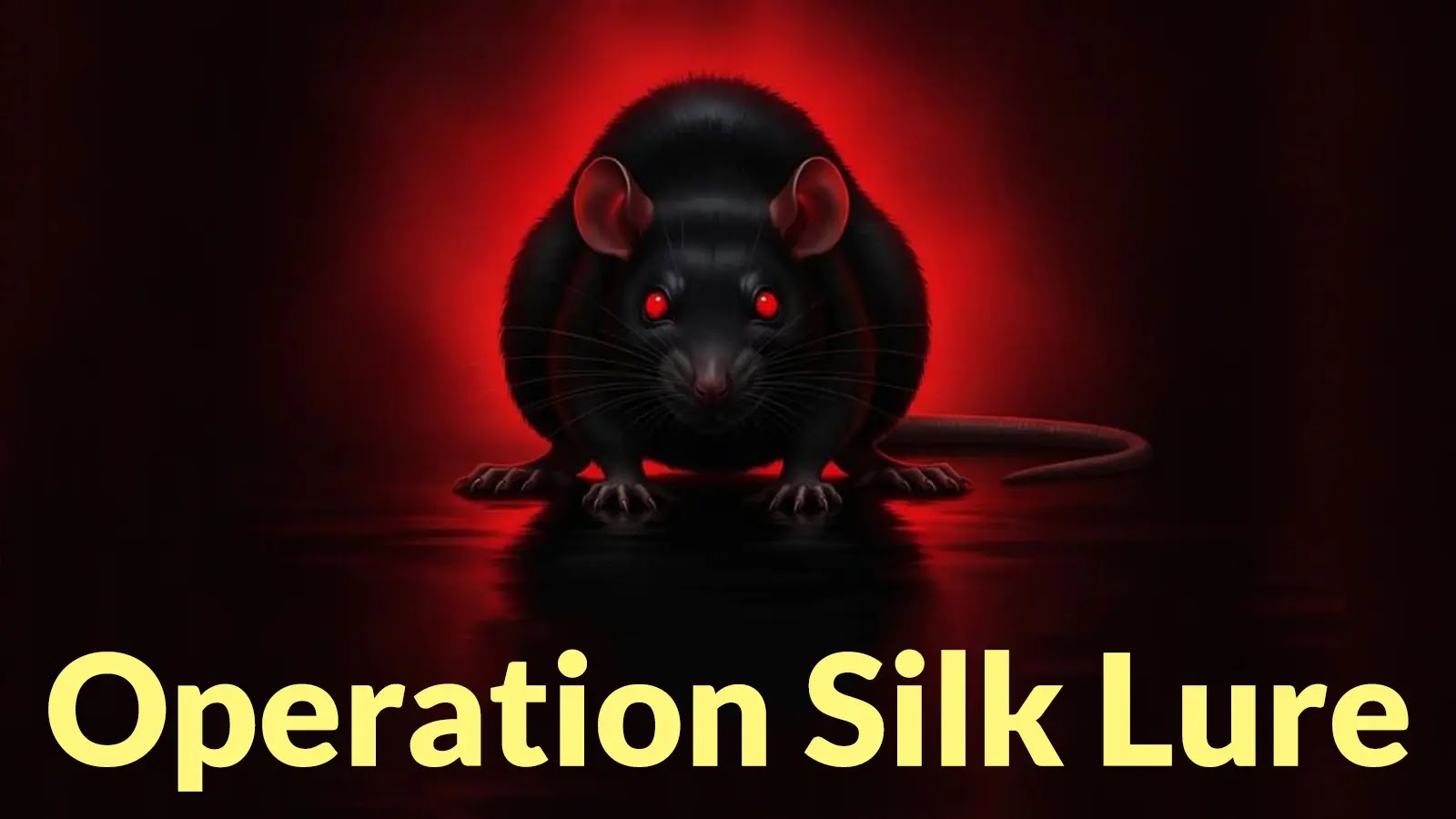
Operation Silk Lure Weaponizing Windows Scheduled Tasks to Drop ValleyRAT
Operation Silk Lure: Unraveling the Threat of ValleyRAT via Windows Scheduled Tasks
The digital landscape is under constant siege, and threat actors continually refine their tactics. A recent and concerning development is Operation Silk Lure, a targeted campaign that weaponizes the seemingly innocuous Windows Task Scheduler to deploy a new variant of ValleyRAT. This analysis delves into the mechanics of Operation Silk Lure, specifically focusing on its sophisticated use of social engineering and system-level functionalities to compromise targets.
The Deceptive Lure: Spear-Phishing and LNK Files
Operation Silk Lure surfaced around mid-2025, initiating its assault through highly tailored spear-phishing emails. These emails are meticulously crafted to appear legitimate, often impersonating credible sources to gain the victim’s trust. The primary vector for initial compromise is a malicious LNK attachment, cleverly disguised as a candidate resume. This tactic leverages a common human vulnerability: the tendency to open attachments from seemingly important communications, especially those related to recruitment.
When a victim innocently clicks on the LNK file, a hidden PowerShell command is immediately executed. This command acts as the initial stage of the attack, designed to download subsequent malicious payloads without raising immediate suspicion.
Weaponizing Windows Scheduled Tasks
The true ingenuity of Operation Silk Lure lies in its exploitation of the Windows Task Scheduler. This built-in operating system utility is designed to automate routine tasks, making its legitimate use ubiquitous across all Windows environments. Threat actors leverage this trust to establish persistence and evade detection.
Instead of relying on more conventional persistence mechanisms that might be flagged by security software, Operation Silk Lure manipulates the Task Scheduler to launch its malicious payload. This allows ValleyRAT to execute at predetermined intervals or under specific conditions, maintaining a foothold on the compromised system even after reboots or attempts to clean infected files.
The use of scheduled tasks provides several advantages for the attackers:
- Stealth: Scheduled tasks blend in with legitimate system activities, making them harder to distinguish from benign processes.
- Persistence: Once a task is scheduled, the malware can re-execute automatically, ensuring continued access to the compromised system.
- Evasion: Many traditional security solutions focus on detecting known malware signatures or unusual process executions. Scheduled tasks often operate within the normal parameters of system activity, allowing them to bypass some detection mechanisms.
Understanding ValleyRAT: A New Threat Variant
Operation Silk Lure deploys a novel variant of ValleyRAT. While specific details of this new variant are still emerging, Remote Access Trojans (RATs) like ValleyRAT are exceptionally dangerous. They grant attackers extensive control over a compromised machine, enabling a wide range of malicious activities, including:
- Data Exfiltration: Stealing sensitive information such as credentials, financial data, and intellectual property.
- System Manipulation: Installing additional malware, modifying system configurations, and controlling peripheral devices.
- Espionage: Monitoring user activity, recording keystrokes, and capturing screenshots or webcam footage.
- Lateral Movement: Using the compromised system as a springboard to attack other machines within the network.
Remediation Actions and Proactive Defense
Defending against sophisticated campaigns like Operation Silk Lure requires a multi-layered approach focusing on both preventative measures and rapid response capabilities. Since specific CVEs directly tied to Operation Silk Lure’s exploitation of Task Scheduler in this manner aren’t currently available, the focus shifts to robust defensive practices.
Technical Controls:
- Endpoint Detection and Response (EDR): Implement EDR solutions capable of monitoring process execution, file system changes, and scheduled tasks for anomalous behavior. Advanced EDR can often detect the creation of suspicious scheduled tasks or unusual PowerShell activity.
- Email Security Gateways (ESG): Deploy robust ESG solutions that can effectively filter spear-phishing attempts, identify malicious attachments (especially LNK files), and flag suspicious email content.
- Application Whitelisting/Blacklisting: Restrict the execution of unauthorized applications and scripts. While difficult to implement fully, a carefully configured whitelisting policy can significantly reduce attack surfaces.
- PowerShell Logging and Auditing: Enable comprehensive PowerShell logging (Module Logging, Script Block Logging, Transcription) across all endpoints. Regularly review these logs for unusual command executions, encoded commands, or downloads from suspicious URLs.
- Scheduled Task Monitoring: Regularly audit Windows Scheduled Tasks for newly created or modified tasks, especially those configured to run with elevated privileges or execute unusual commands. Tools like Sysinternals Autoruns can help in this regard.
- Intrusion Detection/Prevention Systems (IDS/IPS): Ensure IDS/IPS are up-to-date and configured to detect known command-and-control (C2) communication patterns associated with RATs like ValleyRAT.
User Education and Awareness:
- Security Awareness Training: Conduct regular and engaging security awareness training for all employees, emphasizing the dangers of spear-phishing, suspicious attachments, and the importance of verifying sender identities.
- “Think Before You Click”: Instill a culture of skepticism towards unsolicited emails, especially those containing attachments or links, even if they appear to be from a trusted source. Encourage users to report suspicious emails.
Incident Response:
- Develop an Incident Response Plan: Have a well-defined and regularly tested incident response plan to handle potential compromises quickly and efficiently.
- Network Segmentation: Implement network segmentation to limit lateral movement in the event of a breach, containing the impact of a ValleyRAT infection.
| Tool Name | Purpose | Link |
|---|---|---|
| Microsoft Defender for Endpoint | EDR, threat protection, vulnerability management | Learn more |
| Sysinternals Autoruns | Identifies all programs configured to run during system startup/login, including scheduled tasks | Download |
| Proofpoint / Mimecast | Advanced email security gateway solutions | Proofpoint / Mimecast |
| Palo Alto Networks Cortex XDR | Extended Detection and Response platform | Learn more |
Key Takeaways
Operation Silk Lure serves as a stark reminder of the evolving threat landscape. The strategic use of spear-phishing combined with the clever exploitation of Windows Scheduled Tasks for persistence and the deployment of a new ValleyRAT variant highlights the need for vigilant security posture. Organizations must prioritize robust email security, advanced endpoint detection, comprehensive logging, and continuous security awareness training to mitigate the risks posed by such sophisticated attacks.





